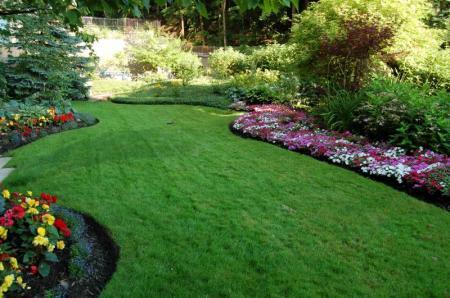 |
|
Business and economic improvement
Lawns increase the value of a property by 15 to 20 per cent. They improve curb appeal. Real estate agents will tell you that homes with well-maintained landscapes and turf sell quicker and for higher values. Property managers say that well-maintained landscapes increase tenant satisfaction and lower vacancy rates.
Climate control
Turf serves as a natural air-conditioner. On a hot day, compare the difference between standing on pavement and standing on turf. The difference in temperature and comfort is measurable. The turf on eight average-sized healthy front lawns has the cooling effect of 70 tons of air conditioning, enough for 16 average homes.
Dust filter
Turf traps dust and smoke particles from the air and acts as a filter for the air we breathe. This is particularly important in urban areas where dust generated by cars and trucks can be trapped and washed down into the soil, preventing further movement.
Erosion control
Grass offers a very efficient and inexpensive erosion control function. Turf intercepts raindrops before they disturb the soil. Turf promotes water percolation rather than runoff. Our streams and drainage infrastructure would be absolutely overwhelmed if not for turf's water-retention capabilities. Our fertile soil would be lost if the turf biomass was not so efficient at slowing water runoff.
Golf courses
Millions of people play golf for exercise and relaxation. Turf is an integral part of this enjoyable activity.
Environmental benefits
Grass plants capture and use greenhouse gases, thereby counteracting climate change. Turf also traps air pollution and generates much of the oxygen we breathe. A 50- by 50-foot lawn produces enough oxygen for a family of four to breathe for one year. Turf also acts as a barrier that deters chemicals from entering the soil profile.
The natural shedding of turf stems and leaves, as well as mowing clippings left on the lawn contribute large amounts of valuable organic matter to the soil over a number of years.
Injury reducer
Well-maintained turf areas serve as excellent sports surfaces. Turf helps to absorb physical impact and reduce injuries. As a playing surface it is safer than artificial grass or bare soil. It provides traction and cushioning.
Garbage prevention
Garbage is less likely to be thrown on a landscape that is well maintained.
Therapeutic benefits
Gardens (including turf) provide mental health benefits. The Horticultural Therapy Association exists to promote therapeutic benefits of green space as a technique for rehabilitation. No wonder so many people use landscape pictures as screen savers on computers. It has been shown that looking at images of landscapes and plants helps to reduce stress. Grassy areas in golf courses, cemeteries, parks and homes can create feelings of peacefulness and remind us that the earth is alive.
Noise reducer
Grassy areas can decrease noise by eight to 10 decibels. This is especially important in an urban location.
Water filter
Research over the last ten years has demonstrated that storm water runoff from a healthy lawn rarely occurs. Not only does grass slow down water and soil runoff, but it also protects surface water quality as it filters and cleans the water percolating into streams, drainage systems and aquifers.
Sources:
The Professional Landcare Network (PLANET), www.landscarenetwork.org
Sustainable Urban Landscape Information Series, www.sustland.umn.edu